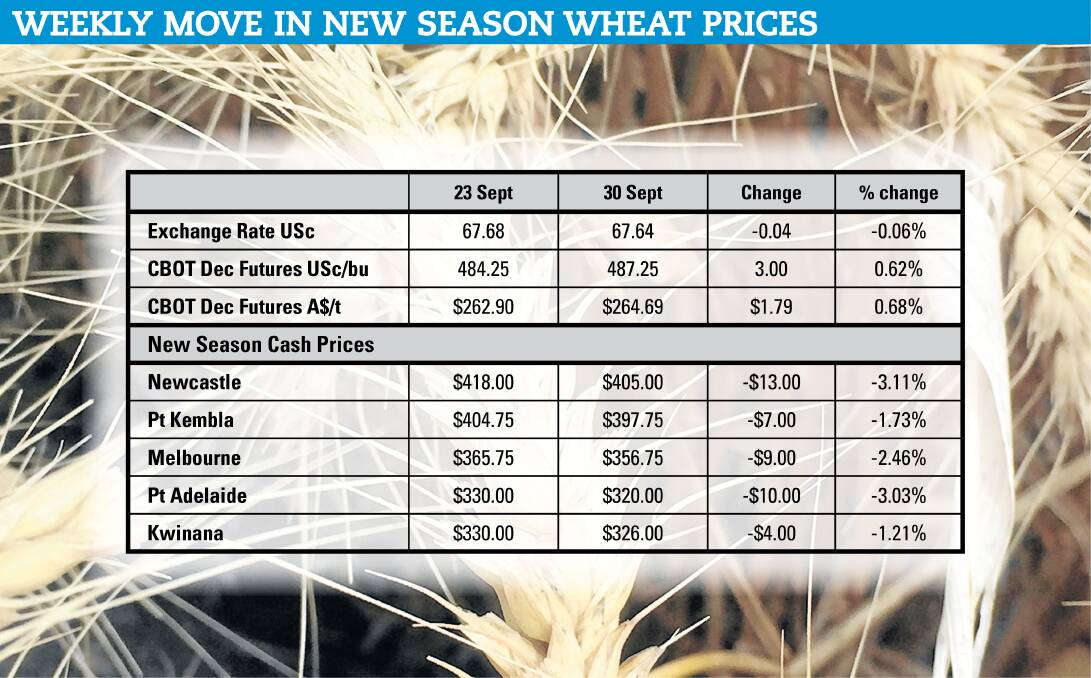
A good rainfall event across SA in the week ending September 27 has helped hold the crop in that state. Parts of Victoria also received some rain, but elsewhere it remained dry.
Subscribe now for unlimited access to all our agricultural news
across the nation
or signup to continue reading
Overall September was another dry month, with large parts of the Australian wheat belt receiving less than 25 millimetres of rain. Probably the best rainfall events were received in SA and Vic.
The forecast for the first week of October is not promising though, with the dry set to continue apart from the south-west corner of WA. The rains may penetrate far enough to help a modest part of the WA wheat belt.
There is little doubt that the Australian crop went backwards during September and will continue to do so during the early part of October.
With some frost damage being reported as well, and crops running out of moisture, more of the crop is heading towards hay production to try and salvage something from the season.
There are also concerns for the Argentinian crop. Combined with Australia, this will impact the southern hemisphere wheat crop this year.

While the global market is watching this with some interest, the reality is that close to 95 per cent of the world's wheat crop is grown in the northern hemisphere. What happens here and in Argentina will have little impact on the global balance sheet.
It is true that exports from Australia and Argentina are more significant, but again the combined total exports only represent around 13pc of total world trade. We are swamped by the Black Sea, the European Union, and North America when it comes to trade.
What may have more impact on wheat prices over the next few months is whether the spring wheat harvest in the United States can be completed, and how much of the Canadian harvest gets finished. A significant snowfall event stopped the harvests last weekend, and it will remain to be seen how easily the crop is able to be harvested now, and what further damage has been done to yield and quality.
It would seem that a source of higher protein spring wheats in the global market has been compromised, mainly through sprouting damage, but again if supplies are adequate from the European and Black Sea crops, there may be limited impact.
In turn, the increase in wheat needing to enter the global feed market may pressure prices of lower grades of wheat, including our own ASW wheat.
The Australian market continues to keep in touch with global prices via the export states of WA and SA. The prices needed to ensure that SA grain can move to the east are still in place.
- Details: 0411 430 609 or malcolm.bartholomaeus@gmail.com

